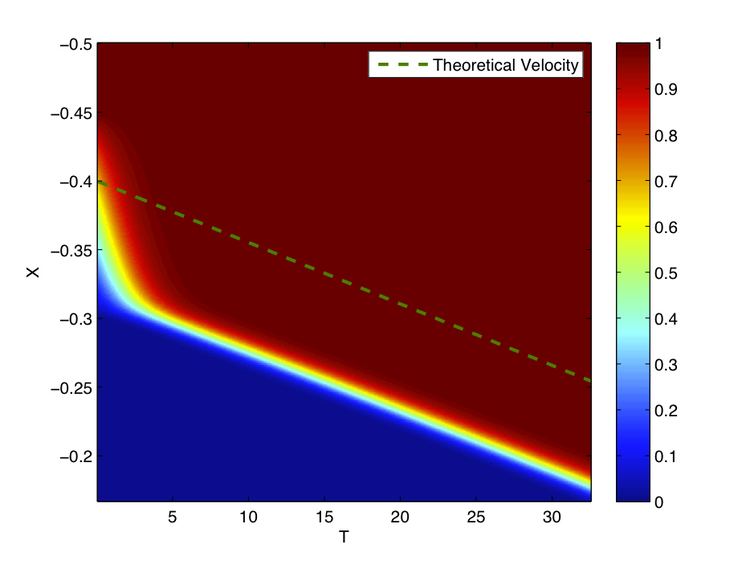 | ||
In mathematics, Fisher's equation (named after statistician and biologist Ronald Fisher, also known as Kolmogorov–Petrovsky–Piscounov equation, KPP equation or Fisher–KPP equation) is the partial differential equation:
It belongs to the class of reaction-diffusion equation: in fact, it is one of the simplest semilinear r.d.e. , the one which has the inhomogeneous term
which can exhibit traveling wave solutions that switch between equilibrium states given by
Fisher proposed this equation in his 1937 paper The wave of advance of advantageous genes in the context of population dynamics to describe the spatial spread of an advantageous allele and explored its travelling wave solutions. For every wave speed
where
That is, the solution switches from the equilibrium state u = 0 to the equilibrium state u = 1. No such solution exists for c < 2. The wave shape for a given wave speed is unique. The travelling-wave solutions are stable against near-field perturbations, but not to far-field perturbations which can thicken the tail. One can prove using the comparison principle and super-solution theory that all solutions with compact initial data converge to waves with the minimum speed.
For the special wave speed
where
Proof of the existence of travelling wave solutions and analysis of their properties is often done by the phase space method.
